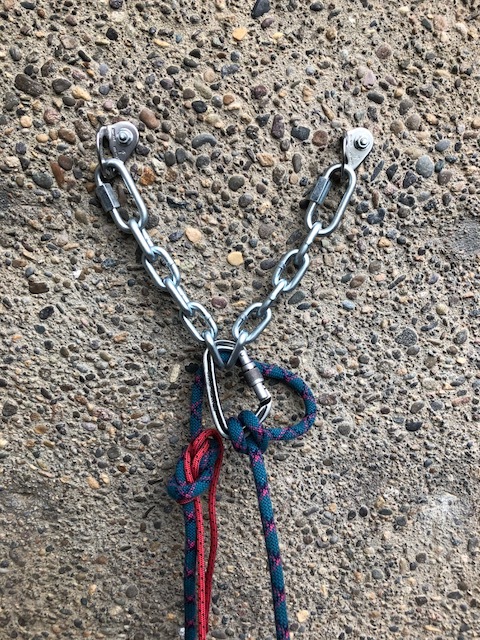Rappelling on ropes of 2 different diameters
You’ve finished a long multi pitch climb, using a single 10 mm rope. From the top, you need to make some double rope rappels to get down.
You partner carried a lightweight 8.5mm rope in her pack, and you now need to use it to make your long rappels. (You chose not to climb with double ropes, because the route was pretty much straight up, and you decided with your partner that the extra hassle/cluster factor of double ropes was not worth it.)
Before you head down the lines, you want to be mindful of a few things.
When rappelling on ropes of two different diameters, the skinny rope is going to slip through your belay device a little faster than the fat rope, which means the ends of the rope may not stay together.
This happens because there is more friction on the fat rope side, therefore the fat rope has the potential to move with you a bit more as you are descending.
This leads to the possibility that the end of the skinny rope can lift off of the next anchor point, potentially leaving you with rope ends that are uneven. If you’re doing a full rope length rappel, this could be a problem.
(The degree to which this happens depends on a a few things, such as what kind of rappel device you’re using, or how slippery or grippy the rope sheath actually is.)
There’s a few ways to keep this from happening. One is to always put the knot connecting your two rap ropes on the “skinny rope side” of the anchor. That way, if the thick rope starts to migrate, the knot will hopefully be stopped by the anchor master point, and keep the ends of the rope at the same length.
It helps if the master point of the rap anchor is a quicklink or some other small diameter hole, rather than a carabiner, which might allow the knot to migrate through it, making the rope pull difficult if not impossible.
Here's a little pneumonic to help you remember a way to mitigate this: PS, or "Pull Skinny.”
That means when you're finished with your rappel, you always pull the skinny rope, which is the side with the knot.
CORRECT set up. The knot is on the skinny red rope side of the anchor. If the knot migrates, it'll stop at the chain link. "Pull Skinny", or "PS", means pull the red skinny rope to retrieve it.
(Note that the red rope is a 6mm pull cord, used here to easily see that it's a smaller diameter.)
INCORRECT set up. As the larger diameter blue rope migrates, it'll pull the knot downwards.
Another way to mitigate this is simply clove hitch the thicker rope to the anchor, have the first climber rappel on the single strand of the fat rope, and then have the first rappeller tie off both strands at the lower anchor to ensure both rope ends stay at the lower anchor. See photo below.



